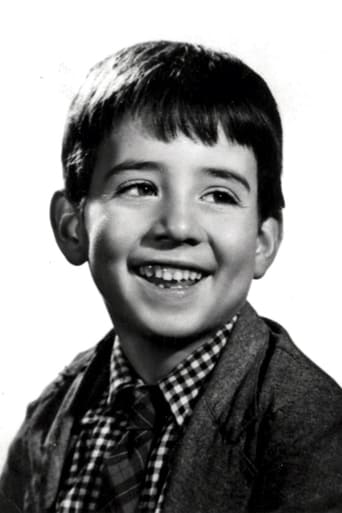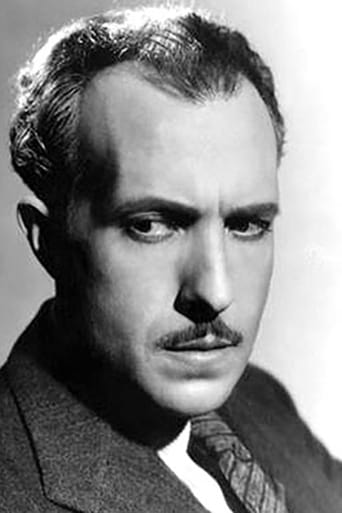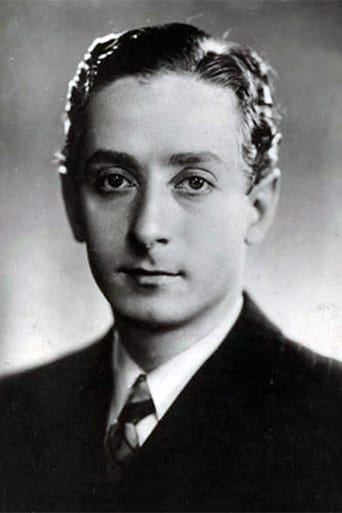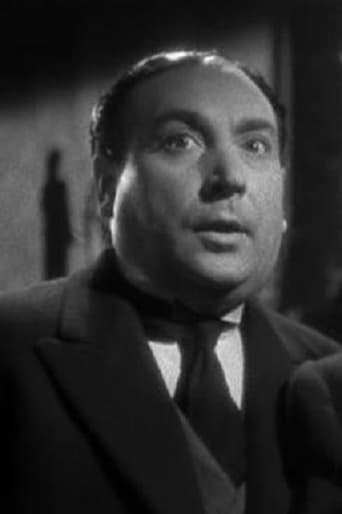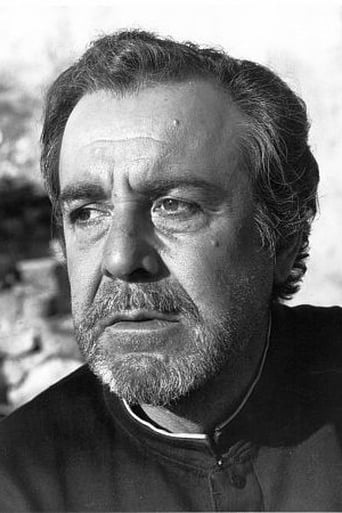Acensbart
Excellent but underrated film
Odelecol
Pretty good movie overall. First half was nothing special but it got better as it went along.
Humaira Grant
It’s not bad or unwatchable but despite the amplitude of the spectacle, the end result is underwhelming.
John T. Ryan
WE WELL RECALL how every good, little Catholic school boy or girl were urged to go and see this one. It did appear that every one of them did in our neighborhood & parish in Chicago. Our neighborhood was called either South Lynne or Ogden Hill and was a segment of the greater community known as West Englewood. The Parish was St. Theodore; a now defunct and otherwise forgotten geopolitical subdivision of the Catholic Archdiocese of Chicago, located at 62nd Street and Paulina Street.* THE FILM IS basically a pleasant story of an orphaned Italian boy who is adopted and being raised as the ward of a monastery of priests. Although little Marcel (hence the diminutive form of "Marcellino") has been dealt a sad hand in life, he is an example of the direct opposite of what one would expect. Marcellino is a total delight as a little guy, being the epitome of happiness incarnate.WE ARE PRIVEKEDGED to follow the little tyke as he explores the monetary and finds a large, lifelike statue of the Crucified Jesus. In his own, totally child's understanding of things, he brings gifts of bread and wine to the image and miraculously accepts them, coming to life and conversing with the child.MUCH TO THE chagrin of his older, holy men inhabitants of the cloistered digs, he continues this behavior. One day, he tells the living image of the Christ that the two things the boy wishes are "to see my Mother and yours!" He is then immediately taken to his eternal reward; amid both the mourning and celebration of the friars.WHEN WE RE-EVALUATE what we originally saw, some 62 years ago, we find that what we have is a sort of hybrid story. It is somewhere between a Catholic/Christian morality play and a classic Fairy Tale. That's not to say that it is not without its merits. It surely has that; particularly to the children who are being brought up in the Faith.AND THAT IS perhaps the main message of the story; that we should strive t have the Faith of a Child. Didn't Jesus say something about "unless one comes to him with his Faith like a Child...." ONE OBSERVATION THAT we have made is the special effects that bring the crucifix's statue of Jesus to life are very similar to that of the German silent picture, THE GOELEM (1920).THAT'S JUST AN observation and is not intended in any way to be derogatory to MARCELLINO.
Marcin Kukuczka
"Every child comes with the message that God is not yet discouraged of man." (Rabindranath Tagore) "We worry about what a child will become tomorrow, yet we forget that he is someone today." (Stacia Tauscher)I have selected two quotes which, at first sight, have little to do with the film. However, when we look deeper at this Spanish classic, the 1955 winner at Cannes and Berlin festivals, we are led to draw a conclusion: it's a movie about a CHILD, a friend of God who, by being fully himself, did not have to become mature in order to address adults and enrapture them with awe and beauty. The thing that has touched me most in this religious classic is its simplicity. A religious theme depicted in movies may absorb different manifestations of spirituality. You can preach something and you make others hear powerful slogans. But conveying values without love has occurred barely useful. Instead, you can address hearts and you make others feel it so intensely that no additional explanations or lectures are necessary. Simplicity is something that touches various people and, meanwhile, something paradoxical: we own it as innate and yet, we lose it somewhere forgetting that this simplicity of life can constantly renew us. Where can we find it more than in such an ingenious, partly naive yet touching story about a child? THE MIRACLE OF MARCELINO (1955) written by Jose Maria Sanchez Silva and directed by Ladislao Vajda is a movie of such influence. The opening sequence is marked by crowds of people who head for a town located in the picturesque landscape of Spain. One monk (Fernando Rey), however, chooses the opposite direction in his journey because he is going to visit an ill child. This is a festival of Marcelino, his feast day which makes so many people celebrate. "Do you know who Marcelino was?" becomes a question addressed to the child in her bed and to viewers in their seats alike. He will be our little protagonist - an orphan boy with such a sweet sounding name who was abandoned as a baby at the gate of a monastery and looked after by twelve Franciscan monks. The flashback brings us to the 19th century Spain and its unique story. Is it a legend? an adventure? a fairy tale or a miracle? As people helped brethren rebuild the monastery, God helps them tackle the dilemma of what future to 'invest' for a crying baby at the gate. Although there are some people who would adopt the boy, including the mayor of the town, brethren know what it means to be good (note the scene at a blacksmith's). They decide to keep him at the monastery as the thirteenth one among them and baptize him Marcelino. From this day on, a great adventure begins for all of them, an adventure filled with the supernatural, awesome experience...The film beautifully handles the core idea of a child that has a spiritual power to change people around him. Many religions stress the aspect that even little children may achieve the heights of spirituality. 5 year old Marcelino (Pablito Calvo) is such a sympathetic protagonist because he owns all childlike characteristics. When he learns, he is curious, when he prays, he is joyful, when he plays, he forgets about the world. There is a lovely scene that presents his everyday activities through a song. At the crucial moment of the film, he shows no fear - he knows who is talking to him. Yet, how can he be afraid of a Friend? Let me highlight one psychological aspect.Although Marcelino seems to have much fun in his everyday life, there is one dream that absorbs him: MOTHER. The little boy is among twelve men but he has no mum. When encountering a woman (Manuel's mother), he is lifted up. His eyes sparkle at once and he imagines the bliss of being in Manuel's shoes, bliss of having a mother (mind you the meaningful name, Manuel, in the course of later events). He immediately creates a friend in his mind whom he never meets. He plays with him, he talks to him...as long as it occurs that there is Someone who can fill this need for true friendship in his little heart. This aspect is important since there have been many critical views that religious films barely carry any psychological development. MARCELINO proves otherwise.Fantasy blends with reality, mysteries with facts and a legend with a historical background. That is also what makes this film so captivating. The scene when he climbs the 'forbidden staircase' and discovers the attic is one of the best moments in the film. Each single detail plays a role in the inner experience, explains a lot: near the stairs, we read the excerpt from Psalm 33 "Humiles Spiritu Salvabit" (God will save the humble of spirit); the close-up of Christ's hand, though considerably influenced by the cinema style of the period, supplies the moment with mystery and piety. HUMOR: Brethren's behaviors and Marcelino's tricks draw our attention and amuse us. One of the most hilarious moments are the missing slices of bread. Moreover, the town sequence offers some moments of laughter. At the same time, the artistic pluses are executed in cinematography and music. But who deserves the credit for being the best Marcelino on screen is PABLITO CALVO. He gives a powerful performance skillfully avoiding the danger of shallow sweetness. His character moves us as a saint child but still a CHILD. Note the subtlety and mystery of the scenes when Marcelino talks to Jesus. We see the boy's face marked by various feelings: from surprise and a little confusion to confidence and peaceful communion.MARCELINO PAN Y VINO is one of the most beautiful religious films ever made, a religious classic that you may watch with heartfelt attitude. Glorious simplicity where 'the small' equal to 'the greatest' in humanity.
thereseorphin
I have seen this beautiful movie when I was a child of 6 with my kindergarten class in my country of birth and I have never forgotten it. I am now in my fifties and live in another country and I still have such fond memories of this movie and I always will. It should be shown in schools all over the world.I now have my own movie on DVD and I would recommend it to anyone. It's a joy to watch , It would have been a better world today if they still made movies like this.I do hope to inspire others to watch the movie with their children and enjoy over and over; Its super for young and old.
Gerald A. DeLuca
When I first saw this film back in 1958, I was a somewhat pietistic adolescent and loved it and this sort of thing, as I had with "The Miracle of Our Lady of Fatima." I went to it a number of times, as a kind of masturbatory ritual that reveled in new Jesus sightings.I recently re-watched the film, for the first time in its original Spanish version, and while there are a number of things in the movie that are truly appealing, it can also be viewed as a fairly sickening piece of religio-lachrymose schlock. My feelings are actually rather ambivalent. I like the occasional poetry of the piece, which suggests Rossellini's great "Francesco giullare di Dio." I like winsome bug-eyed Pablito Calvo as Marcelino. He seems to have won the heart of Europe, if not the world, when the movie came out. His winsome innocence, innate goodness, despite all the Dennis the Menace pranks, are appealing, and his search for a real mother and a real friend has all the poignancy associated with the life of a lonely orphan. The "Marcelino song" sequence as the young boy gets up one morning is quite tender and beautiful. The music score itself is one I like.As for Jesus-in-the-attic sitting down to talk with Marcelino and accept his gifts of bread and wine and then take him (give him death) so that he can see his mother in heaven, that is frightening and sentimental treacle. Perhaps Jesus might have done better if he had come down in to save the Spanish in their fratricidal civil war instead or bring the Jews of Auschwitz to see his mother. It's interesting that Pope Pius XII received actor Pablito Calvo in a special audience and watched the film. It must have brought tears to his eyes, the eyes that looked away from the Jews at Auschwitz.Perhaps none of this makes sense or is even fair, but they are thoughts that went through my head as I re-watched the film from a new adult perspective.One interesting thing for me is the actor Fernando Rey, who appears at the start and finish as the "narrating" monk. Six years later in 1961 he would star in the very anti-clerical film of Luis Buñuel, "Viridiana," which leveled scathing criticism at exactly the kind of bathos dripping out of the treacle of Spanish and Latinate religiosity at its worst. Hmmmmmmmm! Come to think of it, a Spanish monk started the organization Opus Dei, marked by member self-flagellation and general fundamentalist intolerance.Watch "Marcelino" indeed. Enjoy it as I do much of it. (I've also seen the 1990s Italian version by Luigi Comencini, which is inferior to this one.) But examine the mind-set that produces this kind of thing and ask yourself some questions afterward.
